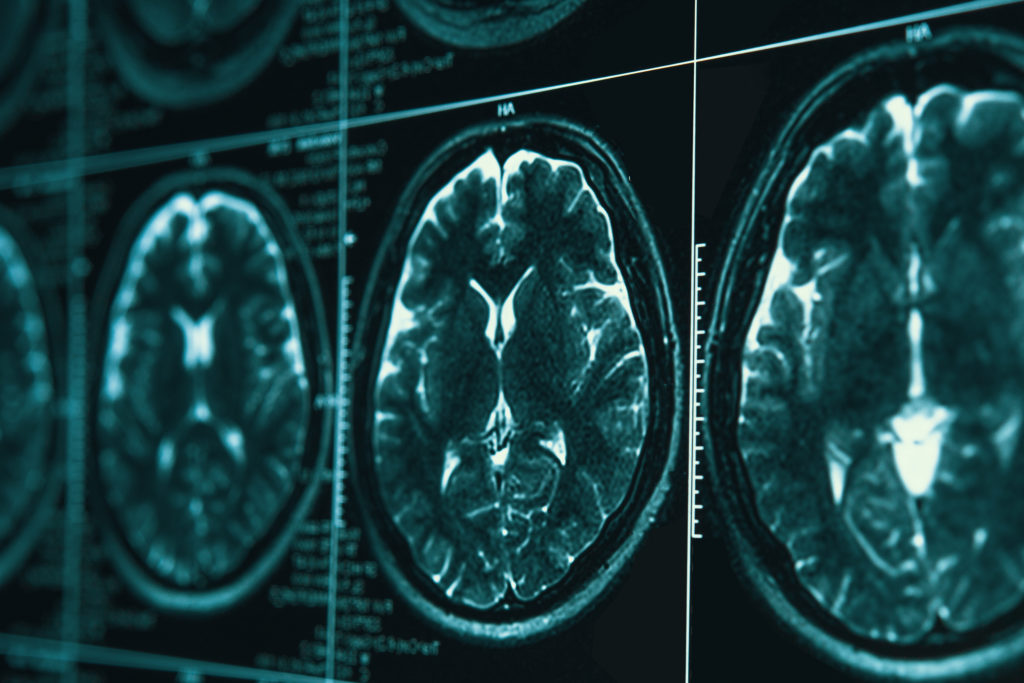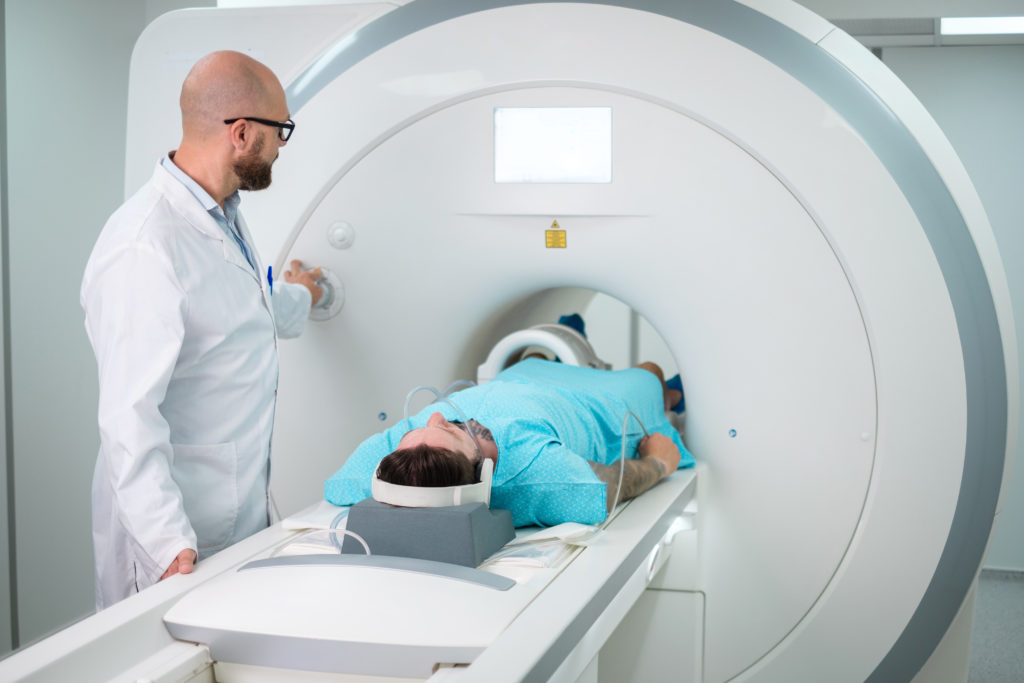There is something magical about a whisper, but have you ever wondered how a whisper might impact your brain?
When you think about the impact of a whisper, I bet you immediately went to the feeling of sexiness that it can elicit. After all, most of us love to experience a “brain orgasm” that a whisper can bring. But is there more to it?
And do hushed coos of sweet nothings tickle everyone’s fancy? Thanks to social media influencers and the wonders of TikTok, you may have heard about ASMR, which stands for Autonomous Sensory Meridian Response. The influencers and others are claiming that the whispered words of ASMR can have a powerful impact on us by reducing anxiety. But is it true?
For some, the answer seems to be an emphatic “yes,” yet it also doesn’t seem to work for everyone. While the phenomenon has been around for a little over a decade, researchers are only now beginning to dig their fMRI machines into why this therapeutic practice could be so impactful for some but not so for others.
The challenge with this research begins with the fact that there’s not even an agreed upon definition of ASMR. While scientists are still struggling to put a fine point on exactly what it is (or isn’t, for that matter), ASMR sensations are a perceptual response translated both physiologically and psychologically. This could result tingling starting at the occipital region and running down the neck, a sense of fuzziness, or general relaxation.

On the more psychological level, it might translate to a sense of ease, calmness, sleepiness, or a feeling of being soothed. And while feeling soothed sounds promising to squelching anxiety, does this therapy work for everyone?
Braingasm Triggers
One of the most likely reasons that this theraputic phenomenon isn’t effective for everyone is that there are at least three main categories that trigger the ASMR response. They are:
- Auditory – Soft whispers, low sounds, clicking of a pen, someone fingering through a book, or brushing
- Visual – Watching someone focusing intently on an object, like origami, someone drawing or painting a picture, kinetic sand, or catching someone’s caring soft gaze.
- Tactile – Having your physical body touched lightly, including your hair brushed, arm grazed, or back touched.
There also seems to be some genetic predisposition factors involved here. Some humans are genetically wired to have a certain level or receptivity to stimuli, or have a varied receptor sensitivity, or just have a decreased sense of proprioception and dermal sensitivity. So, it makes sense that not everyone is going to react to stimulation in the same way.
But aside from dynamic genetic testing, how do you know if you are a candidate to feel the effects of ASMR, or if you just haven’t found the right “kind” of ASMR yet?
What Do The Scans and Surveys Say?
The question of receptiveness to ASMR is something scientists are starting to study. According to a 2019 study published in Peer J, performed by Smith, Fredborg, and Kornelsen, the brain scans show all.
In the study, researchers connected 34 participants to an fMRI. Half of the participants claimed to respond to ASMR, the other half did not. The participants were made to watch six videos, only three of which were intended to create an ASMR response. The fMRI scans for those participants that responded to ASMR showed a higher level of recruitment, which means they showed activity in the areas of the brain known for emotional sensations, physical sensations, and attention. These areas include the cingulate gyrus, cortex, right paracentral lobule, and the thalamus.

The control group felt nothing, and the corresponding brain regions were left unrecruited. This finding implies that there is certainly a physiological inclination to react, or to not react, to ASMR stimuli.
But perhaps physiological inclination is only part of the story. A 2017 study by Beverley Fredborg published in the Journal of Frontiers and Psychology looked at the personality traits of those who reacted, versus those who did not. After having subjects take a comprehensive survey to determine personality characteristics, Fredborg found that while those who reacted to the ASMR and elicited responses were certainly were more bold and extroverted, they also rated highly for neuroticism and low for conscientiousness. In other words, those more likely to be affected and reap the benefits of ASMR are certainly a “type.” The question we must now ask, however, is do participants require those set of characteristics in order to experience the wonders of ASMR?
But even with all of that data, the question remains: can ASMR actually assist with treating anxiety? At this point, it seems that the answer is a definite “maybe” — if your personality and physiology are receptive.
And if you do have anxiety, you might be wondering – why listen to ASMR if I can simply listen to scientifically proven anxiety-reducing classical music or binaural frequencies?
Is Classical Music As Effective As ASMR?
A 2021 study published in Frontiers in Behavioral Neuroscience used fMRI to look at brain activity in subjects when they were listening to ASMR and Classical music. The small group of 30 participants took a questionnaire on somotosensation and their mood, and were asked if they experienced ASMR sensations or frission (goosebumps).
The researchersfound significant recruitment in brain activity during both ASMR and classical music listening. However, participants showed greater and more widespread brain activity while listening to ASMR. Specifically, the MSFG, within the medial prefrontal cortex (mPFC), was activated. This area is associated with oxytocin release, a stress-busting neuropeptide associated with drowsiness, relaxation, and ease. Additionally, the mPFC is crucial in regulating neurotransmitters, including dopamine, in a way that increases resistance to short-term stressors.
In short, ASMR seems to be more impactful than classical music on a brain activity level. Still, while these and other studies seem to show ASMR to be statistically significant in terms of its impact, there are still many caveats to unpack. For example, some studies have found those who do not react to the ASMR sensation to have increased stress levels. So again, continued and meticulous study and an isolation of the components of the therapy are necessary.
Better understanding the potential of the various types of this therapy and the contexts in which they are best used might help practitioners understand ways this therapy can be delivered to cater to those who do have increased stress levels, who clearly could benefit from reduced anxiety.
Looking at ASMR broadly, it seems to offer potential as a treatment in the contexts of stress reduction and psychological regulation. Still, you should remember that this buzzy sensation of a therapy needs far more research.
But for now, there seems to be little risk in giving it a try. So, have fun and explore it on your own in all its wondrous quirkiness – whether that’s someone eating raw octopus, paging through a book, or whispering sweet nothings.
Sources
“ASMR PAGE TURNING Old Book, Comic Book & Magazine NO TALKING.” Www.youtube.com, www.youtube.com/watch?v=6nbrPJu-q6w.
“ASMR SALMON & OCTOPUS SASHIMI (RAW SAVAGE Extreme Soft Chewy EATING SOUNDS) No Talking | SAS-ASMR.” Www.youtube.com, www.youtube.com/watch?v=wsffEFutYQw. Accessed 4 June 2022.
Barratt, Emma L., et al. “Sensory Determinants of the Autonomous Sensory Meridian Response (ASMR): Understanding the Triggers.” PeerJ, vol. 5, 6 Oct. 2017, p. e3846, 10.7717/peerj.3846. Accessed 28 Feb. 2019.
—. “Sensory Determinants of the Autonomous Sensory Meridian Response (ASMR): Understanding the Triggers.” PeerJ, vol. 5, 6 Oct. 2017, p. e3846, 10.7717/peerj.3846.
Barratt, Emma L., and Nick J. Davis. “Autonomous Sensory Meridian Response (ASMR): A Flow-like Mental State.” PeerJ, vol. 3, 26 Mar. 2015, p. e851, peerj.com/articles/851/, 10.7717/peerj.851.
Craig, Daniel G. “An Exploratory Study of Physiological Changes during “Chills” Induced by Music.” Musicae Scientiae, vol. 9, no. 2, July 2005, pp. 273–287, 10.1177/102986490500900207. Accessed 16 May 2020.
D. Smith, Stephen, et al. “An Examination of Personality Traits Associated with Autonomous Sensory Meridian Response (ASMR).” Frontiers in Psychology, 23 Feb. 2017.
Eid, Charlotte M., et al. “Untangling the Tingle: Investigating the Association between the Autonomous Sensory Meridian Response (ASMR), Neuroticism, and Trait & State Anxiety.” PLOS ONE, vol. 17, no. 2, 2 Feb. 2022, p. e0262668, 10.1371/journal.pone.0262668.
Feldman, Ruth. “Oxytocin and Social Affiliation in Humans.” Hormones and Behavior, vol. 61, no. 3, Mar. 2012, pp. 380–391, 10.1016/j.yhbeh.2012.01.008. Accessed 5 Oct. 2019.
“Fredborg B – Search Results – PubMed.” PubMed, pubmed.ncbi.nlm.nih.gov/?term=Fredborg+B&cauthor_id=28280478. Accessed 4 June 2022.
Jairom, Presley. “The Effects of Autonomous Sensory Meridian Response (ASMR) Videos and ASMR Group on State Anxiety.” JURNAL PSIKOLOGI MALAYSIA, vol. 35, no. 3, 7 Jan. 2022, spaj.ukm.my/ppppm/jpm/article/view/708. Accessed 4 June 2022.
Lochte, Bryson C., et al. “An FMRI Investigation of the Neural Correlates Underlying the Autonomous Sensory Meridian Response (ASMR).” BioImpacts, vol. 8, no. 4, 23 Sept. 2018, pp. 295–304, 10.15171/bi.2018.32.
Park, Sun-A., and Hee Su Lim. “The Effect of ASMR on Anxiety, Stress, Sleep Quality in University Students.” The Journal of the Convergence on Culture Technology, vol. 8, no. 2, 2022, pp. 321–327, www.koreascience.or.kr/article/JAKO202211262736824.page, 10.17703/JCCT.2022.8.2.321. Accessed 4 June 2022.
Poerio, Giulia L., et al. “The Awesome as Well as the Awful: Heightened Sensory Sensitivity Predicts the Presence and Intensity of Autonomous Sensory Meridian Response (ASMR).” Journal of Research in Personality, 24 Dec. 2021, p. 104183, www.sciencedirect.com/science/article/abs/pii/S0092656621001203, 10.1016/j.jrp.2021.104183.
Sakurai, Noriko, et al. “Induction of Relaxation by Autonomous Sensory Meridian Response.” Frontiers in Behavioral Neuroscience, vol. 15, 30 Nov. 2021, 10.3389/fnbeh.2021.761621.
Smith, Stephen D., et al. “An Examination of the Default Mode Network in Individuals with Autonomous Sensory Meridian Response (ASMR).” Social Neuroscience, vol. 12, no. 4, 31 May 2016, pp. 361–365, 10.1080/17470919.2016.1188851.
